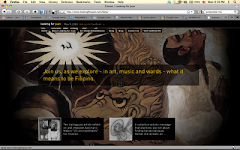Some of their predictions:
- ...the U.S. dollar, while remaining important, will decline to "first among equals" among other national currencies. Similarly, the US will continue to be the most powerful country in the world, but its days as "the world's only superpower" will be over. China and India, following a "state capitalism" economic model, were likely to join the United States atop a multipolar world and compete for influence.
- Russia's potential was less certain, depending on its energy wealth and internal investment. But Iran, Turkey and Indonesia were also seen gaining power.
- A world with multiple power centers has been less stable than one with a single or two rival superpowers, and there was a growing potential for conflict.
- Global warming will be felt, and water, food and energy constraints may fuel conflict over resources.
- Global wealth was seen shifting from the developed West to the energy-rich Gulf States and Russia, and to Asia, the rising center of manufacturing and some service industries.
- A shift away from an oil-based energy system will be underway or complete by 2025. Better renewable technologies such as solar and wind power offer the best opportunity for a quick and low-cost transition.
- The risk that militant groups would use biological weapons was greater than the risk of nuclear terrorism.
- India, China and Brazil will rise, the Korean peninsula will be unified in some form, and new powers are likely to emerge from the Muslim non-Arab world.
And where does the Philippines fit in all these possible scenarios? Well, the Philippines merits only a line - mainly as an example of a country with potential conflicts between a large Christian population and a minority Muslim constituency. Which really is a reflection of our relative influence in the world.But reading the report itself, taking it as a jump-off point for stepping back and trying to see the big picture, and thinking about where we are and where we are headed - as a country and as a people and even as individuals - is a very useful exercise.
We highly recommend it.
You can download the report for free here.





No comments:
Post a Comment